Most housewives and mushroom pickers claim that honey agarics have high palatability. They can not only be fried and marinated, but also boiled, salted, and also added to different dishes. A big plus is the ease of assembly.
So, mushrooms grow in groups, and they are always noticeable, so you can collect a complete basket at a time. However, experts warn that there are doubles of honey mushrooms - conditionally edible and even poisonous mushrooms that can cause severe intoxication of the body. That is why it is very important to know how to distinguish forest mushrooms from false species of mushrooms.
Content
Characteristic features of the species
The fruit body of the fungus, as seen in the photo, is of medium size. The leg is thin and plastic, grows up to 10-15 cm in height. The color of the legs varies from beige with a yellow tint to dark brown, and depends on the maturity of the fungus. Some fruits have a small skirt, which is located on the top of the legs.
The hat is small in size, has a regular round shape, the edges are bent inward. The shape of the hat depends on age. So, young mushrooms can be distinguished by a round hat with a small amount of scales. Adult fruiting bodies have a hat with a smooth surface, without scales, in shape resembling an umbrella. The color depends on the species and can be beige, with a slight yellow or red tint.
Honey mushrooms are considered the most common type of mushroom in central Russia; they prefer birch, oak and coniferous trees. This species includes more than 30 different varieties, which differ not only in appearance and taste, but also in edibility. So, there are not only edible, but also inedible mushrooms. Experts count more than 200 species of trees near which these mushrooms grow. People call them mushroom workers, since very often they grow on already dry trees, stumps, roots or trunks.
According to its functions, the honey agaric is referred to the orderlies of the forest, since it destroys dead trees. Mushrooms can process biological mass into microelements, which positively affects the composition and fertility of the soil. Since ancient times, honey mushrooms were considered healing mushrooms, because they were often used as compresses for cuts, wounds and burns.
In one place, mushrooms grow no more than 12-15 years, in large groups, because at one time you can not only fill the basket, but also collect more than 2 kg. Experienced mushroom pickers claim that young fruits with an unopened hat are cut off with legs, and mature fruit parts are harvested without a stem, since it does not carry any value and does not differ in taste.
Also, many experts recommend carefully cutting young parts with a leg, not under the root, so as not to damage the mycelium, which can bear fruit for another 10-12 years.
Popular types of edible mushrooms
In order not to be poisoned with honey mushrooms, you need to know the distinguishing features of edible varieties, as well as be able to distinguish between them.
In addition, there are a number of common signs by which you can check the edibility of the fungus:
- Edible mushrooms cannot have a very bright color, which immediately catches the eye. Basically, this is the first and main sign of false and inedible species.

Honey mushrooms are false and edible. - All edible varieties have a small frill located at the top of the stem. It is characteristic of honey agarics of any age and is more reminiscent of a ring thickening on the leg. It is this feature that is considered decisive in determining mushrooms in the food group.
- It is also necessary to look at the inside of the hat. Edible species have a nice beige color. The bright color of the plates can indicate the toxicity of the species. If you look at the young fruits, then on the surface of the hat you can see the presence of scales, which is absolutely not characteristic of inedible species. However, the scales disappear in mature honey agarics, which is why mushroom pickers recommend picking exclusively young fruits.
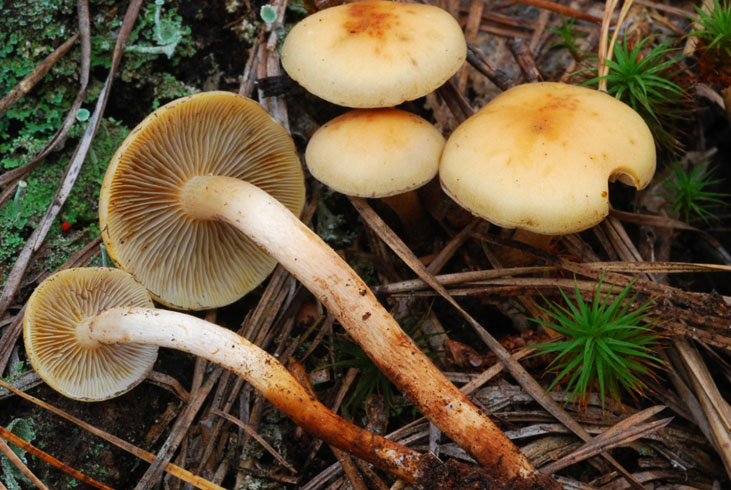
The color of the inside of the hat
There are several varieties of edible mushrooms:
- Summer variety is considered one of the most common. You can often meet him on the stumps or trunks of deciduous trees. Fruits are small in size, the stem grows up to 5-7 cm in height. To the touch, it is smooth in the upper part, and dark scales are present below. Only young fruits have a skirt.
Initially, the hat is round and convex, and with age, a small fossa appears in the center. On the back of the cap is a plate system. The pulp is light, has a pleasant characteristic mushroom aroma. Fruits summer variety from mid-spring to November.
- Autumn got its name due to the fact that the peak of their productivity falls on the end of summer and the beginning of autumn. Compared to summer varieties, the autumn ones have a higher leg, about 10-12 cm high. The top is thin, yellow in color with a light brown tint, and below it becomes a little wider and acquires a brown hue. It is in autumn varieties that the skirt has a yellowish tint.
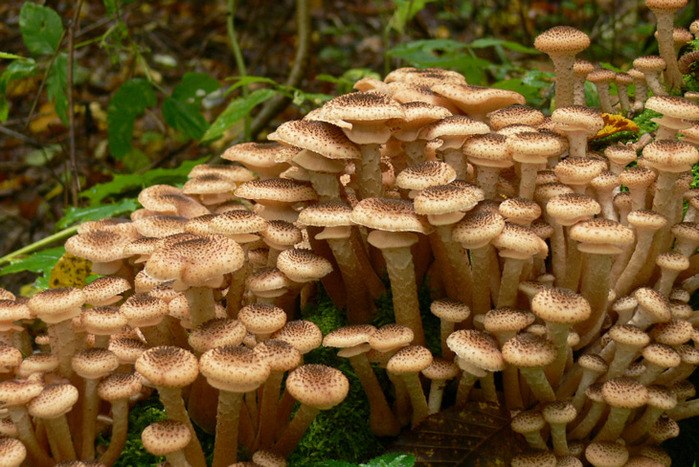
Autumn honey agaric - Winter varieties grow from mid-autumn to early spring and prefer deciduous trees. They have a low leg, 3-6 cm. The hat has a light brown color with a slight red tint. It is this variety that does not have a skirt initially.
Conditionally edible
Edible species include varieties of poppy and pine mushrooms, the main difference of which is considered unpleasant aroma and raw taste in already ripe fruits.
Poppy or seroplate plate honey has a rounded cap of regular shape, the diameter of which reaches 5-7 cm. With age, it becomes more convex and prostrate. When growing in an environment with high humidity, the hat may turn light brown. In dry places, it is light yellow. The central part is more brightly colored in comparison with the periphery. The pulp is light, it is characterized by the smell of dampness. The leg of the fetus is long, about 10 cm, the shape may be different.
The lower part is orange, and the upper is yellow. The mushroom's plates are light yellow, smoothly passing to the upper part of the stem. With age, the lamellar part becomes dark, and the color is similar to poppy seeds, for which the mushroom and get your name. The peak yield of the variety occurs at the end of summer and the beginning of autumn, and it can be found most often on the stumps and rotten trunks of pine trees.
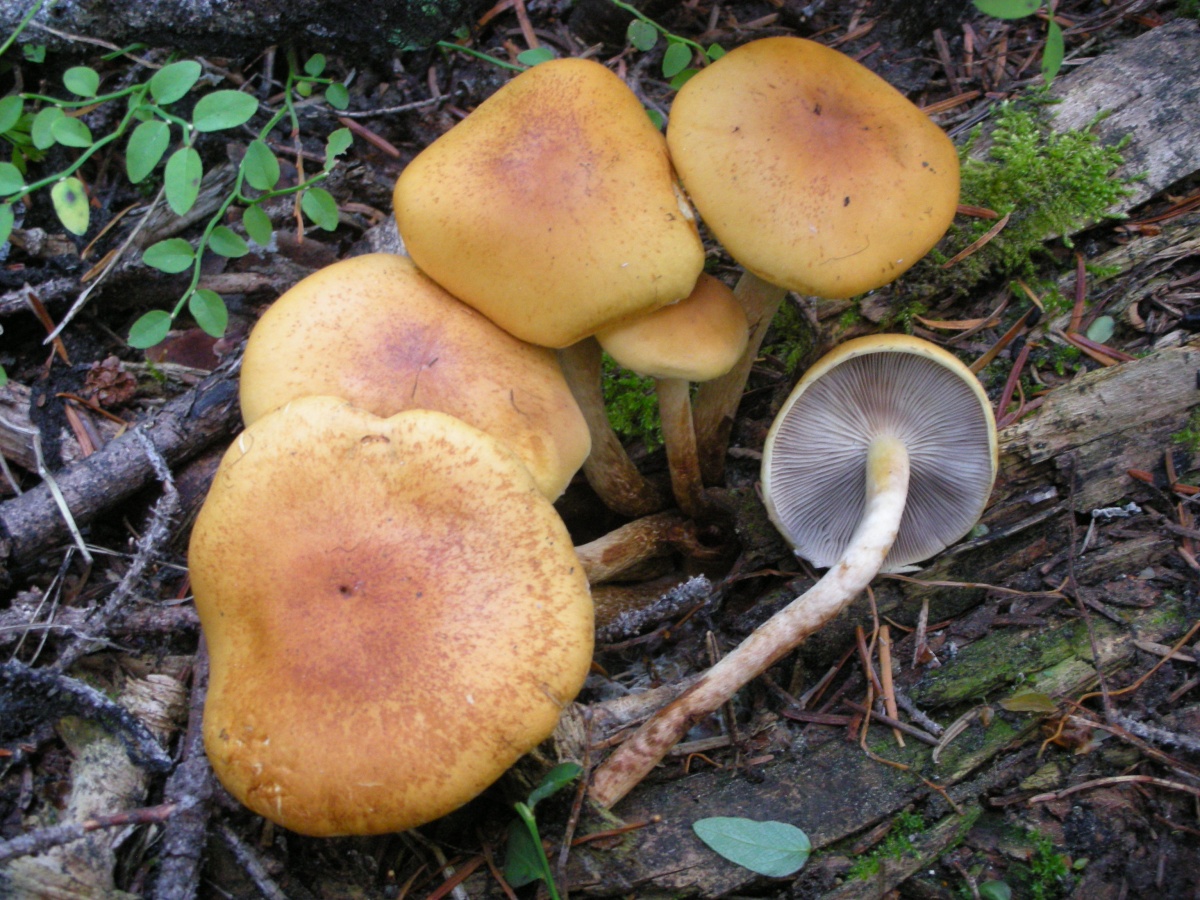
Pine mushroom prefers to grow on deciduous trees, despite its name. The hat is initially round, but gradually becomes flat and outstretched. The surface is velvety to the touch.
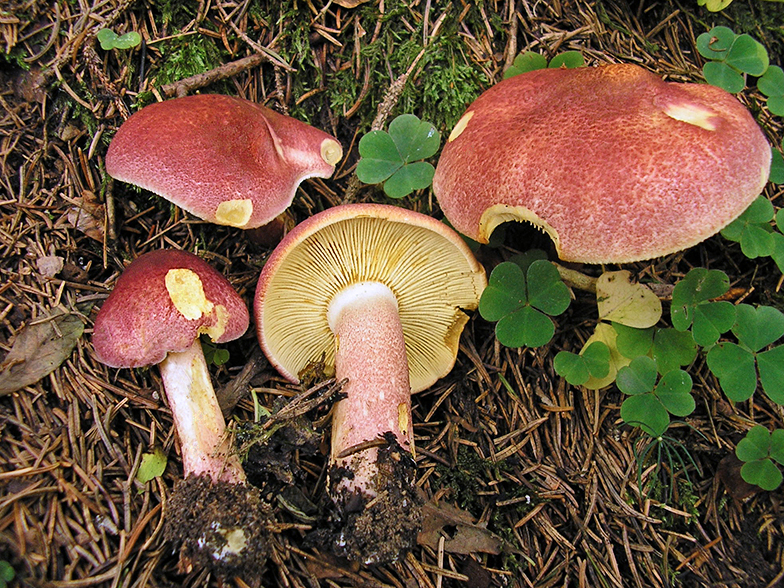
Mostly orange or yellow-red bright color. Leg cylindrical, yellow with a red tint, about 5 cm in height, expanded at the bottom. The flesh is yellowish and has a characteristic odor with acidity. The lamellar part is yellow, prickly to the touch.
False and poisonous mushrooms
There are only two types of poisonous mushrooms - brick red and sulfur yellow. There are several rules that can help you identify inedible varieties.
So, on false varieties on the surface of the cap there are initially no scales, and to the touch it is smooth and slightly sticky. The color of the hat itself is always bright and attracts attention. The plates are also bright in color. A distinctive feature is the smell, which often resembles putrefactive. The skirt is missing from the very beginning.
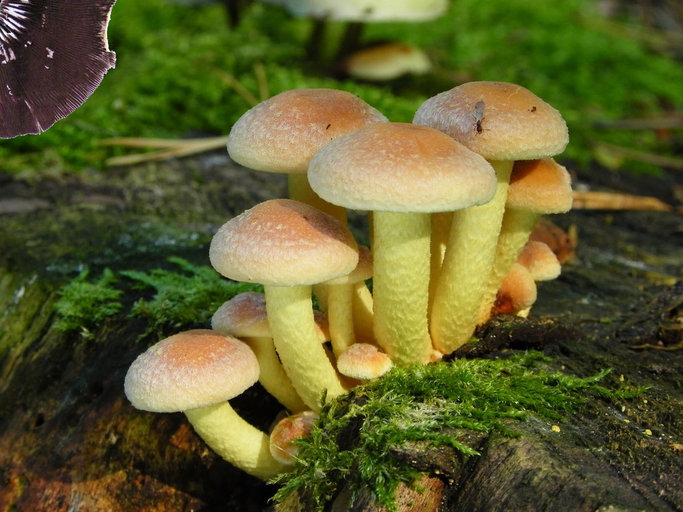
Sulfur yellow varieties preferably grow on stumps or trunks of spoiled trees. You can find them from late spring to October. The fruit is small in size. The cap is about 5-6 cm in diameter, convex, with age a small tubercle forms in the center. The pulp has a grayish tint and an unpleasant odor, as well as a soft texture. The leg is low.
Brick red varieties have the same localization. Most often they can be found both in coniferous and mixed forests from early spring to late autumn. In young fruits, the hat is round, and later becomes semicircular.
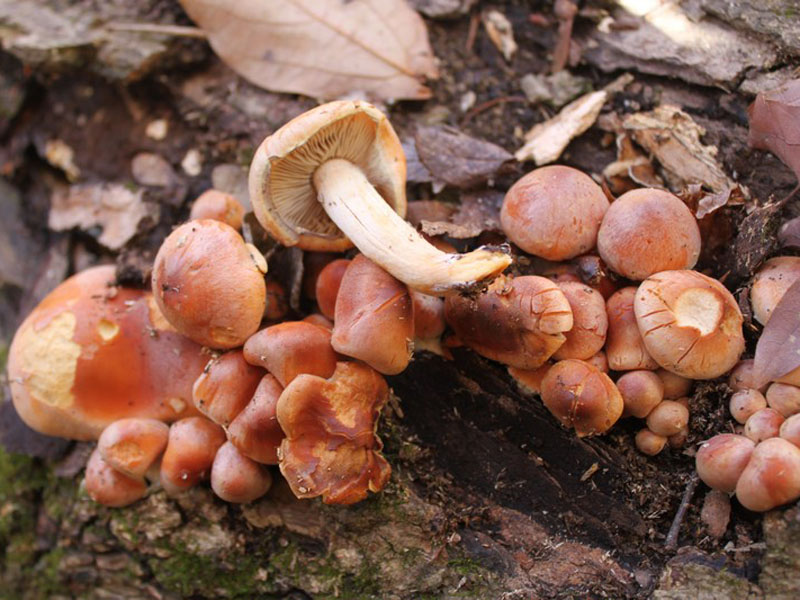
The lower part of the cap is shrouded in a cobweb, and the plates have a characteristic yellow color. The leg is hollow, and the pulp is absolutely odorless. Initially, the hat is yellow, but eventually becomes chocolate.
Answers to Common Questions
Honey mushrooms are one of the most common mushrooms found in Russian forests. They are popular for their palatability and ease of assembly.

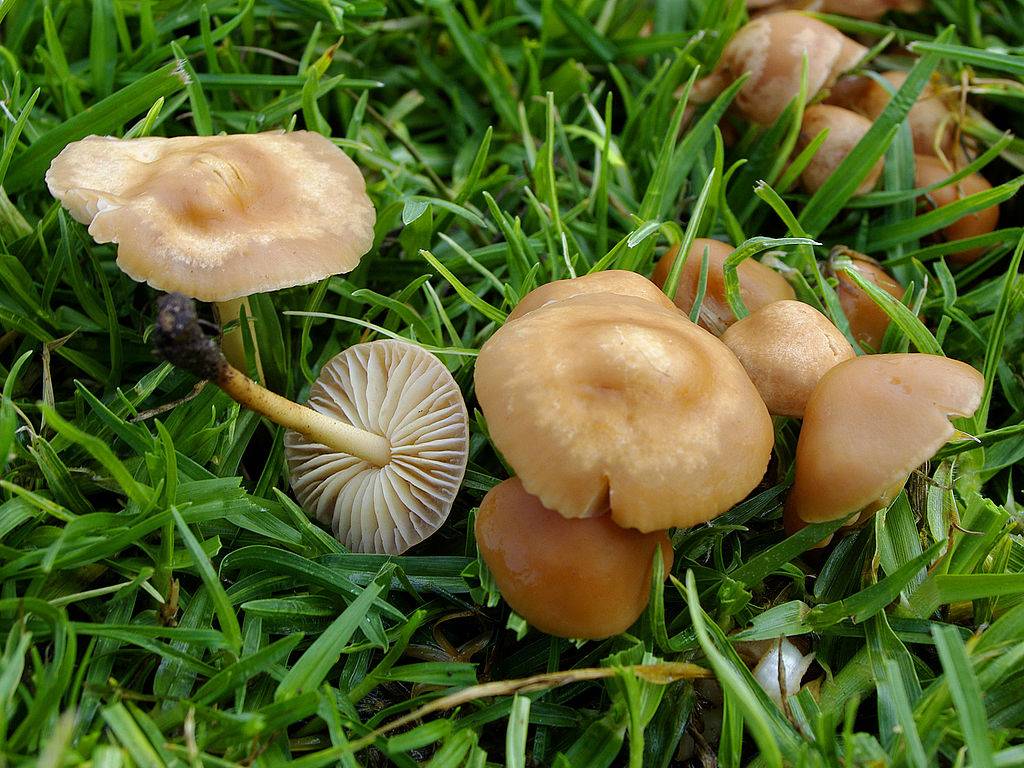
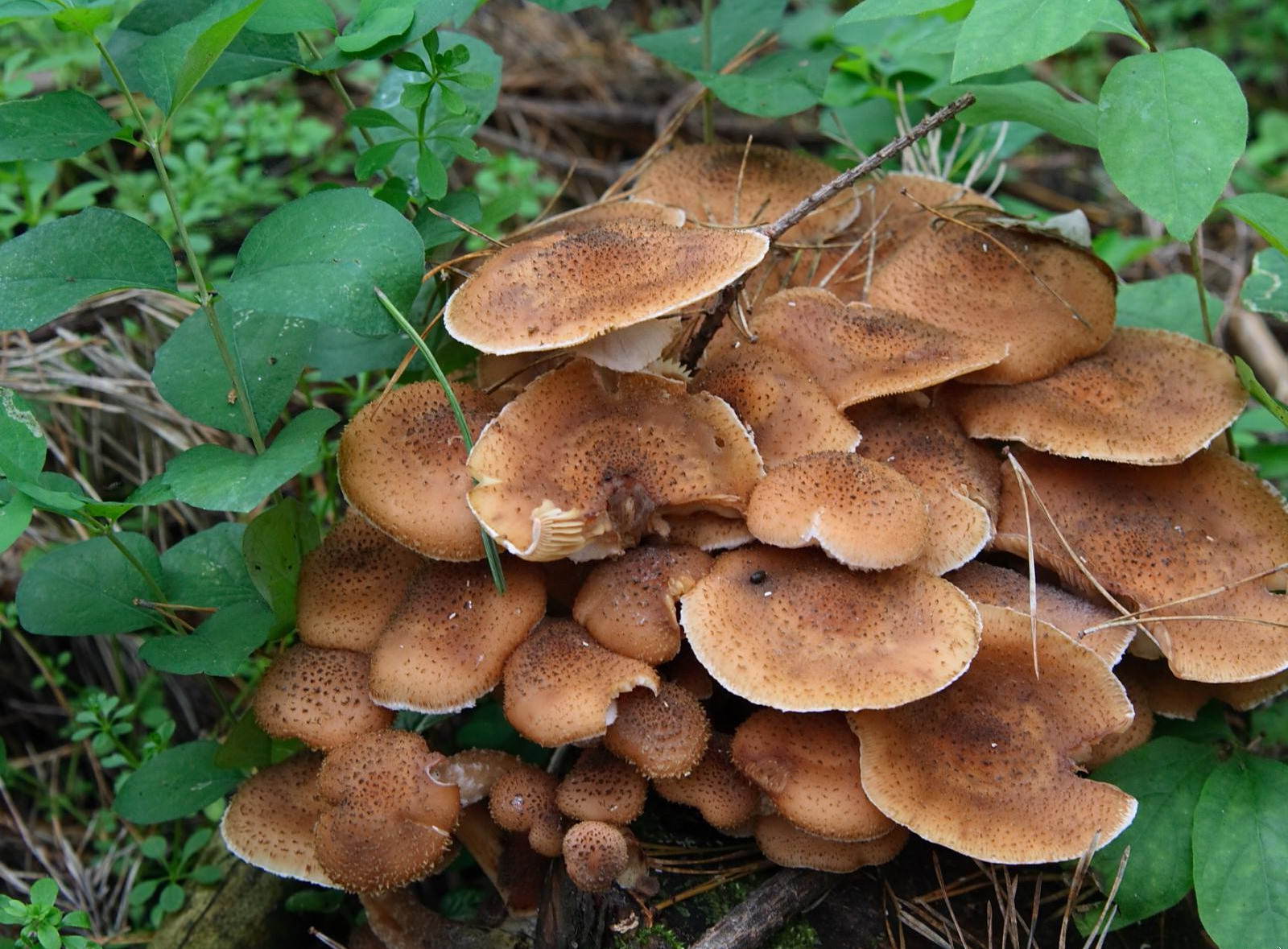
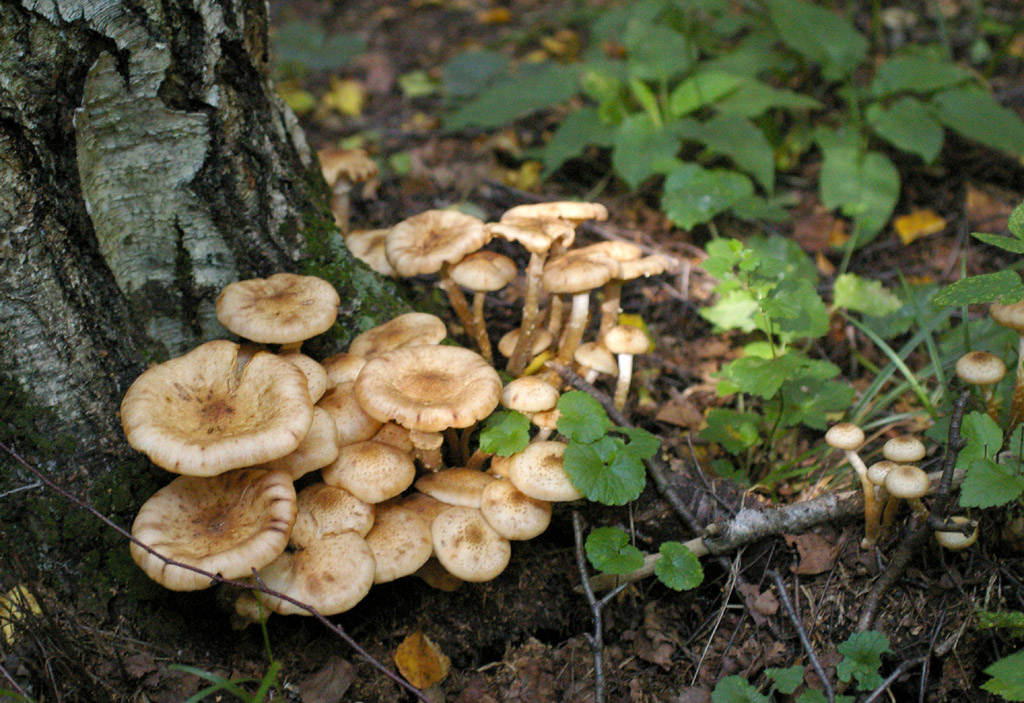
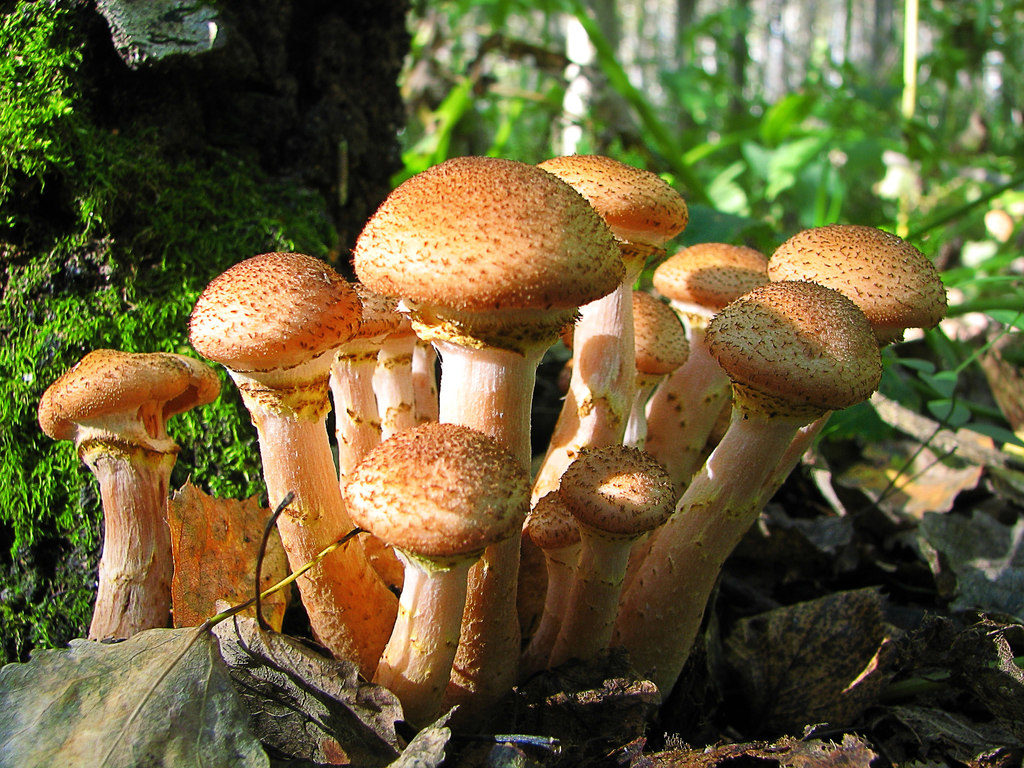
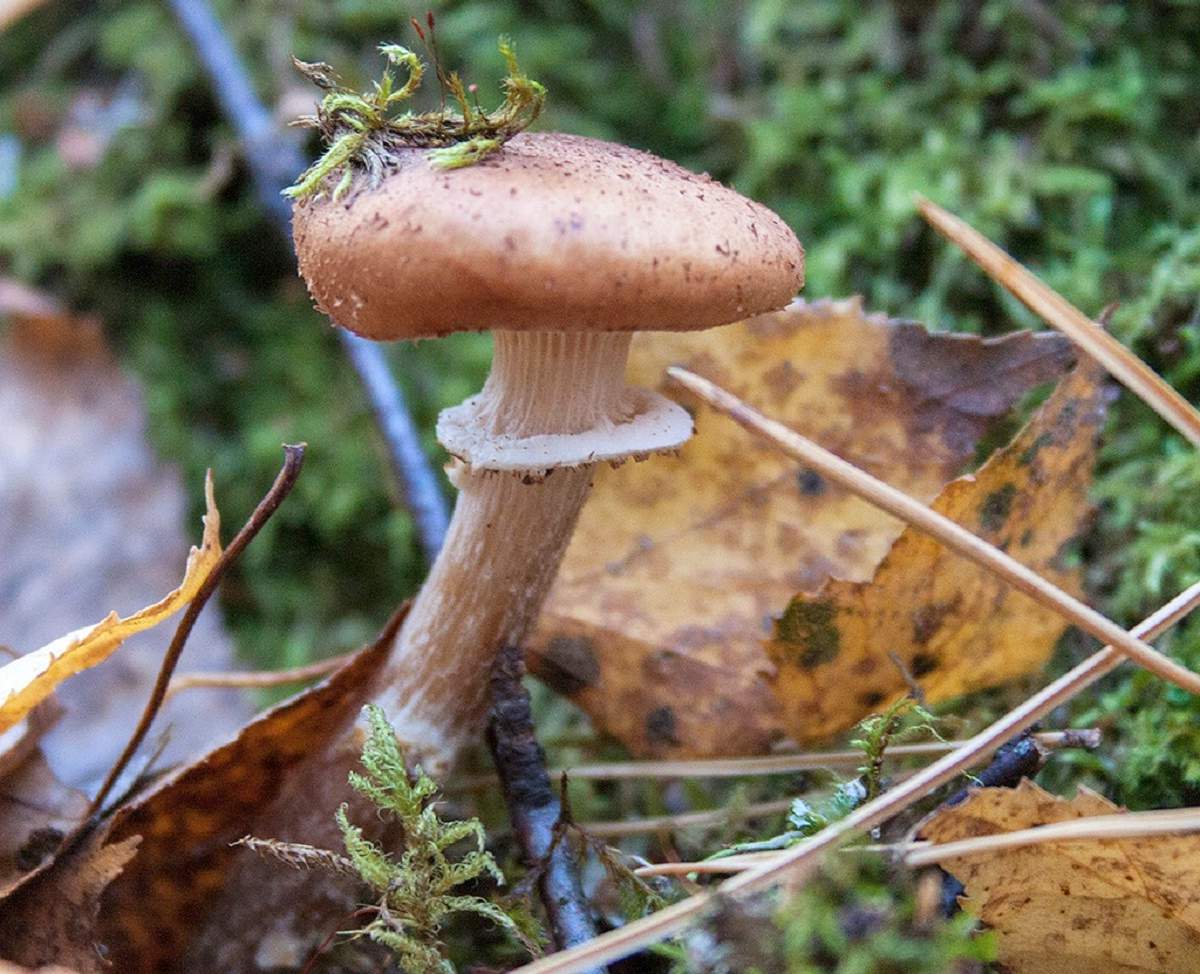
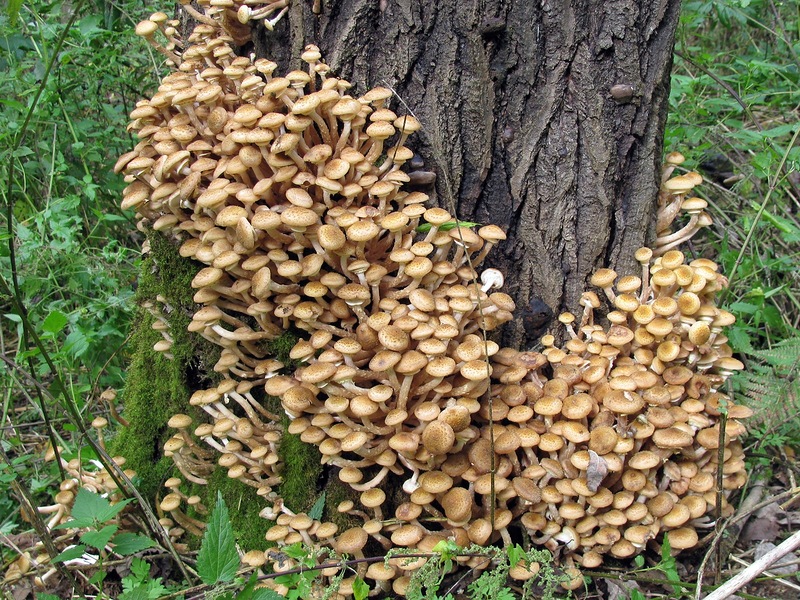
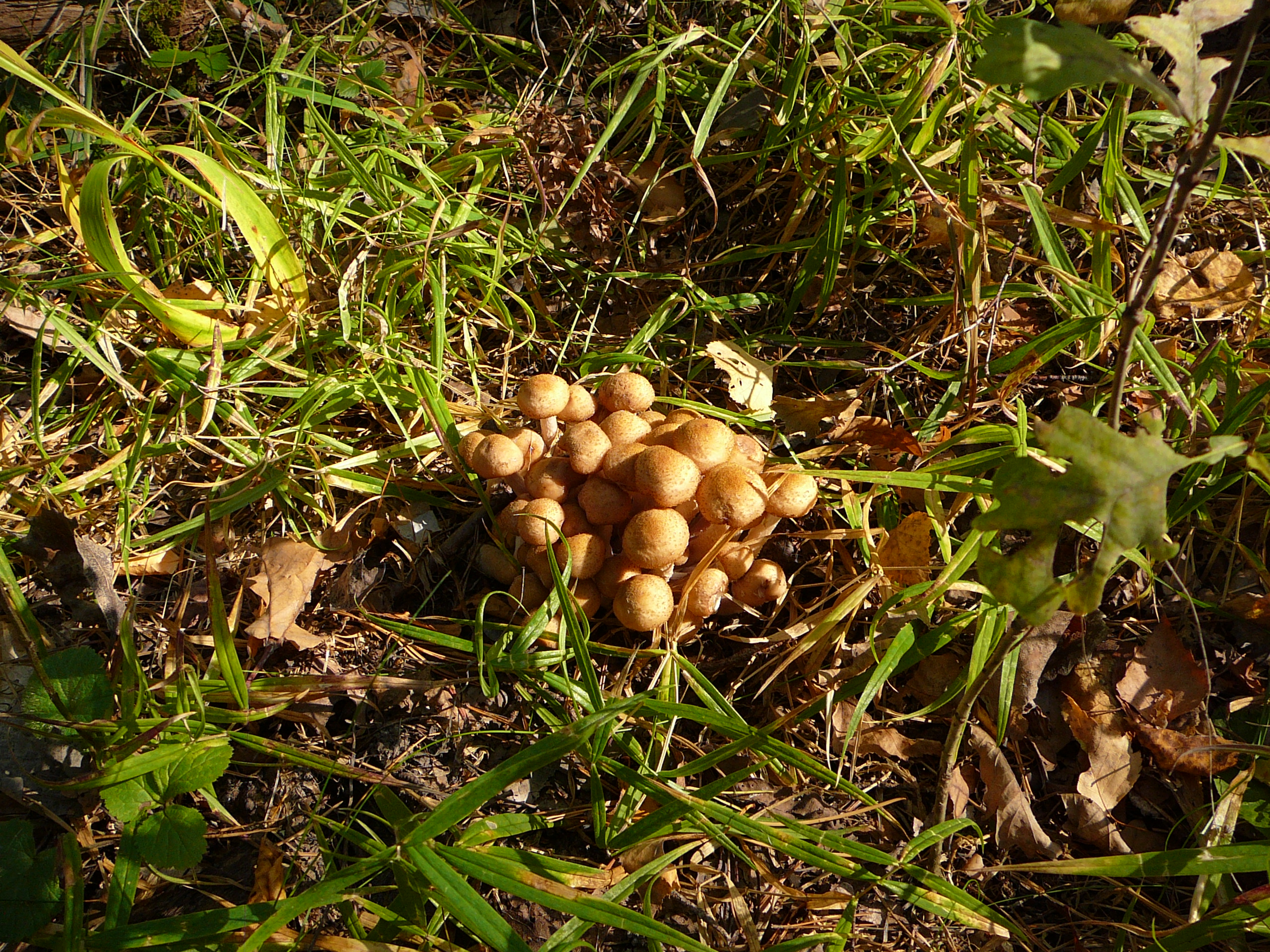
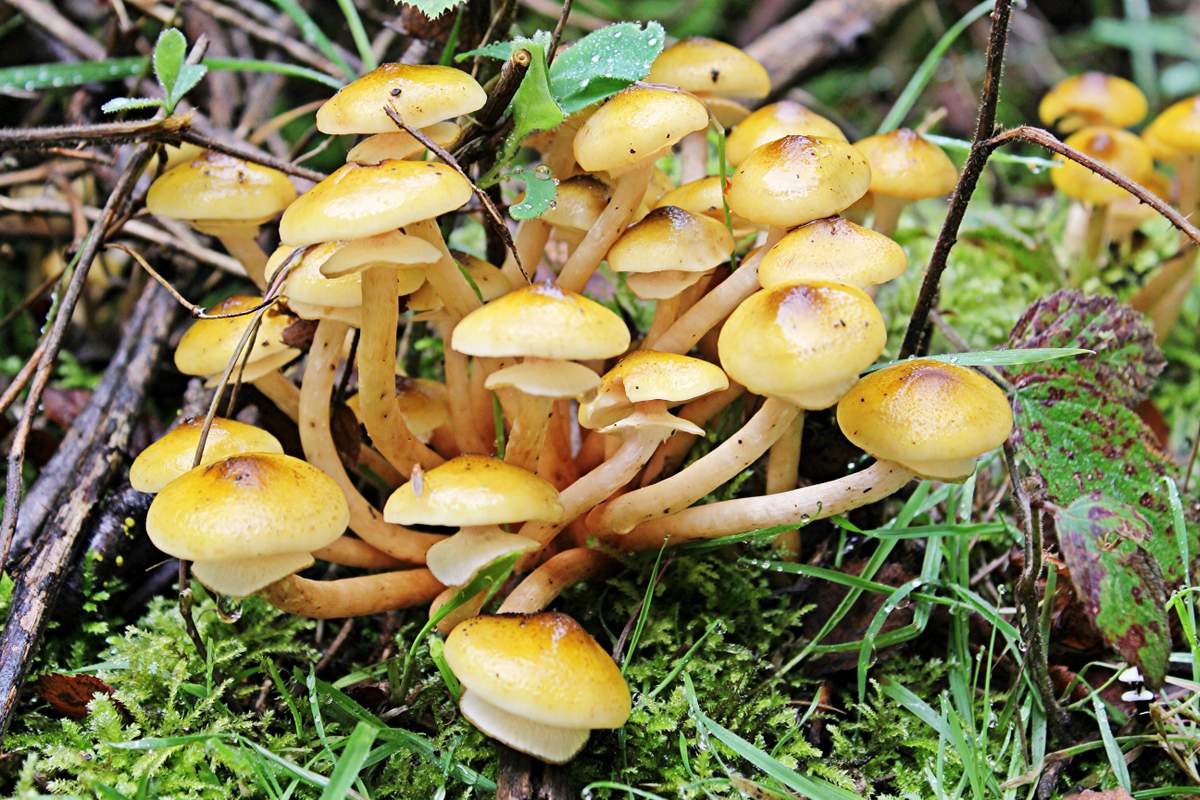
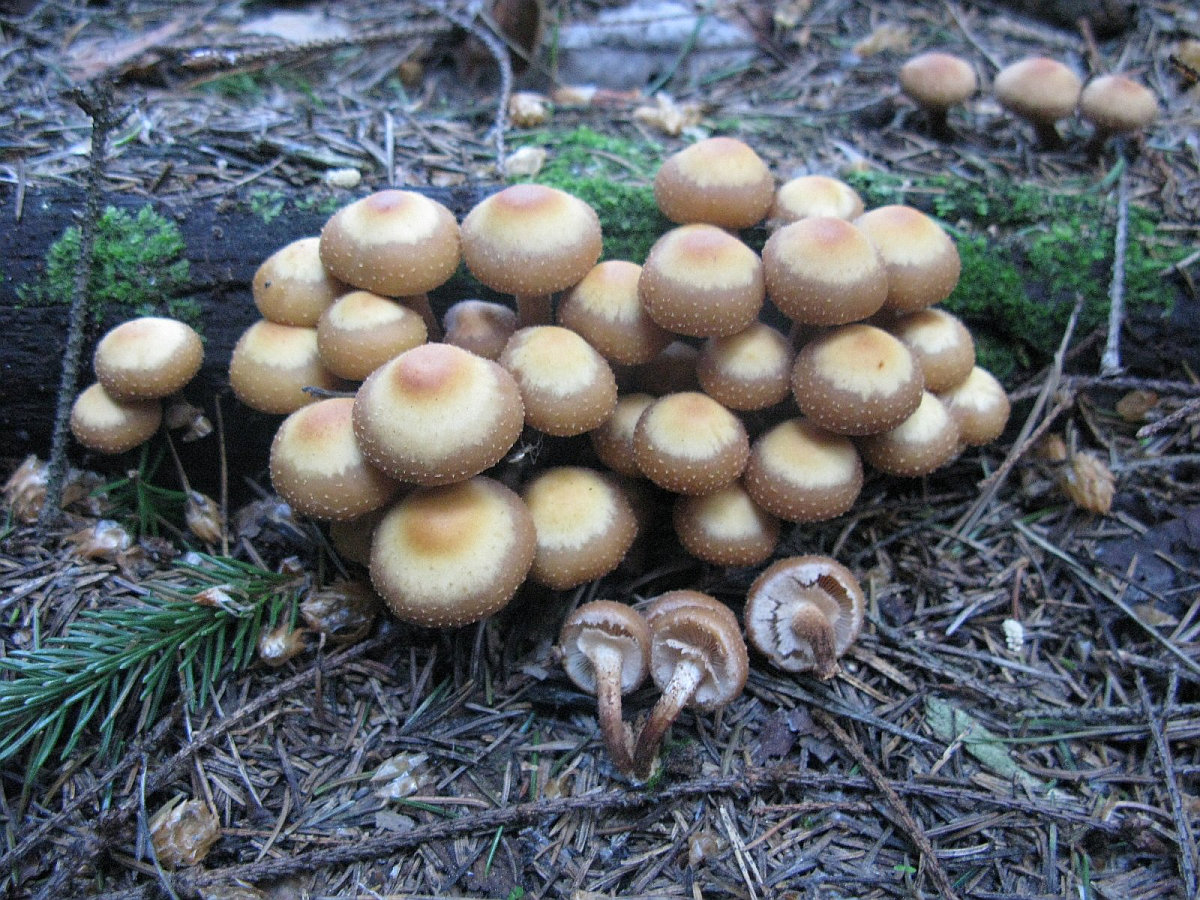
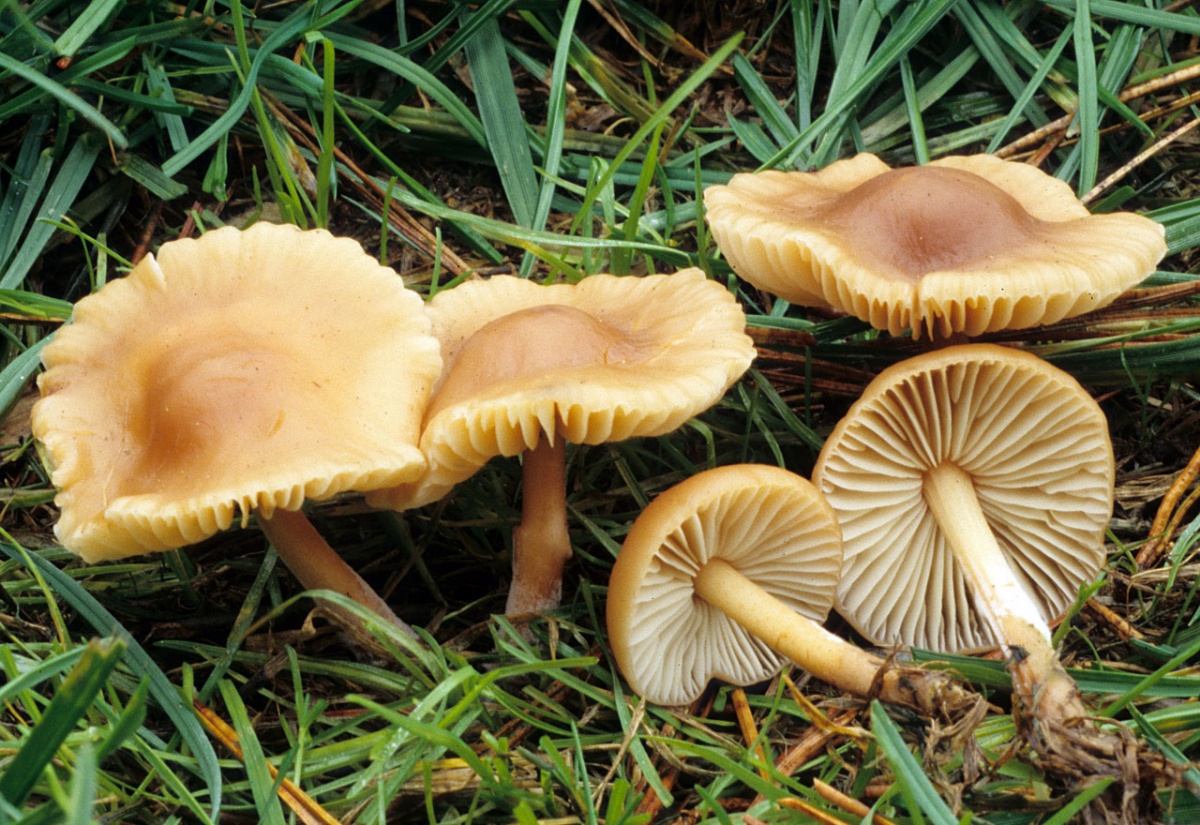
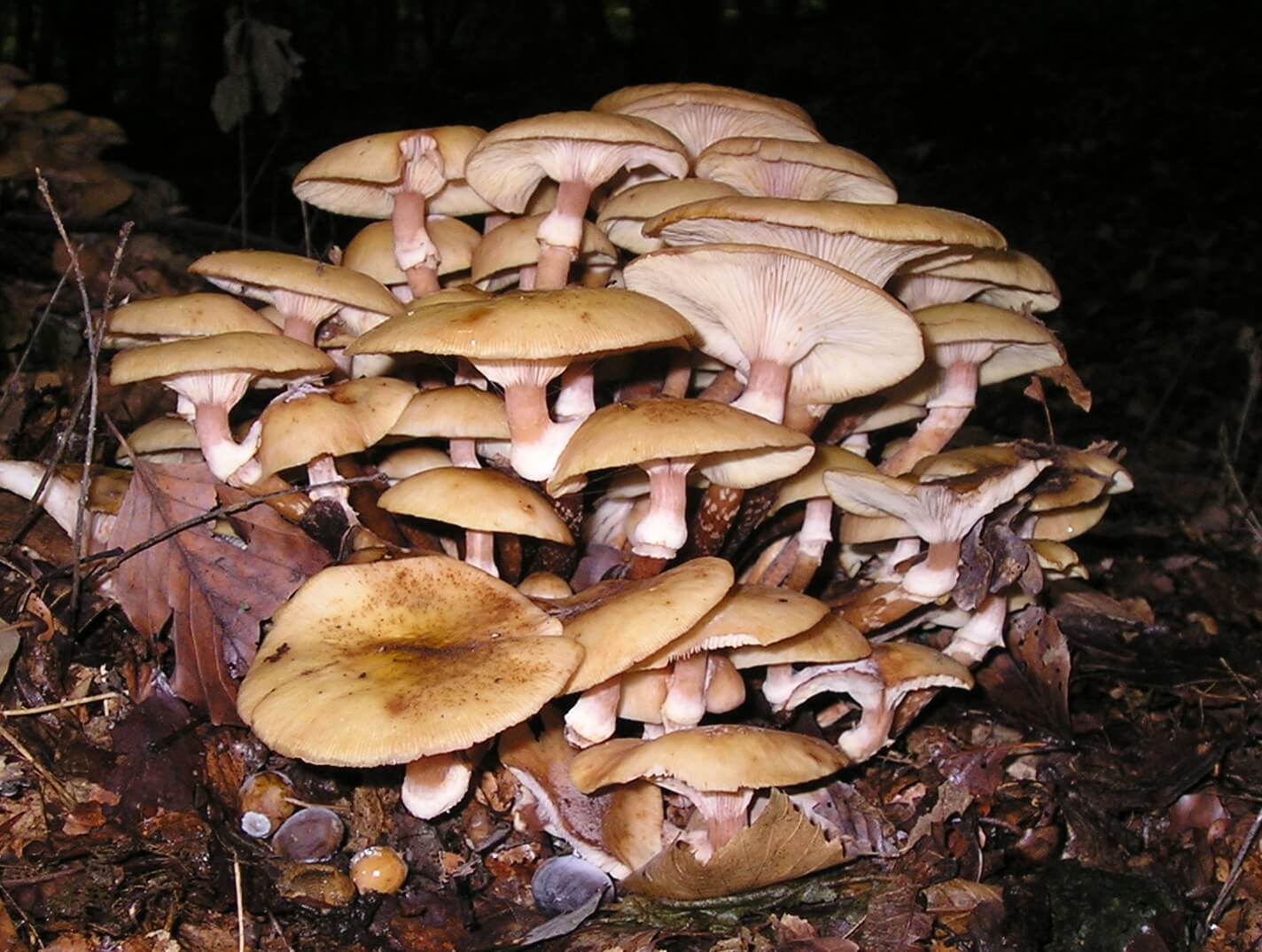
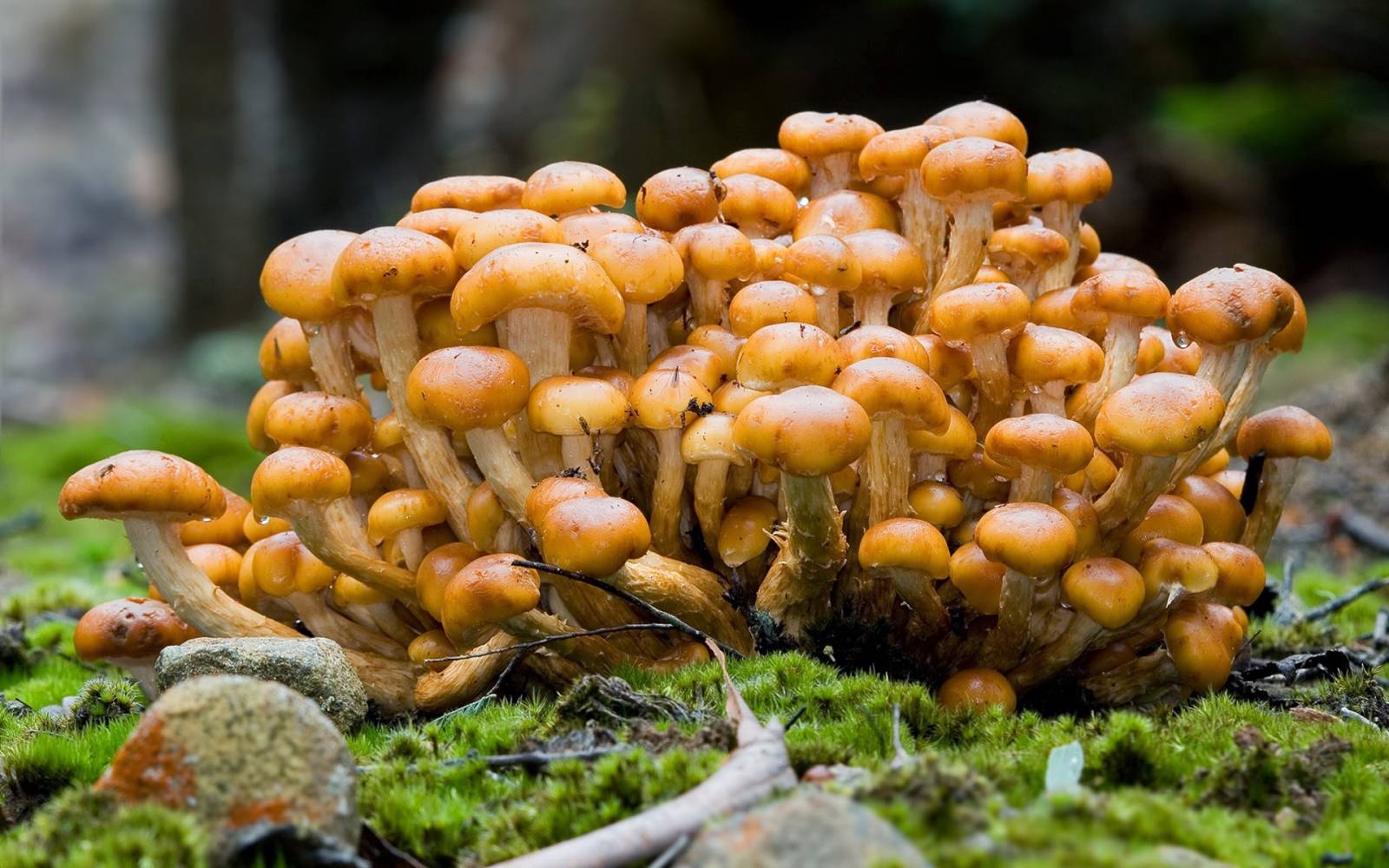

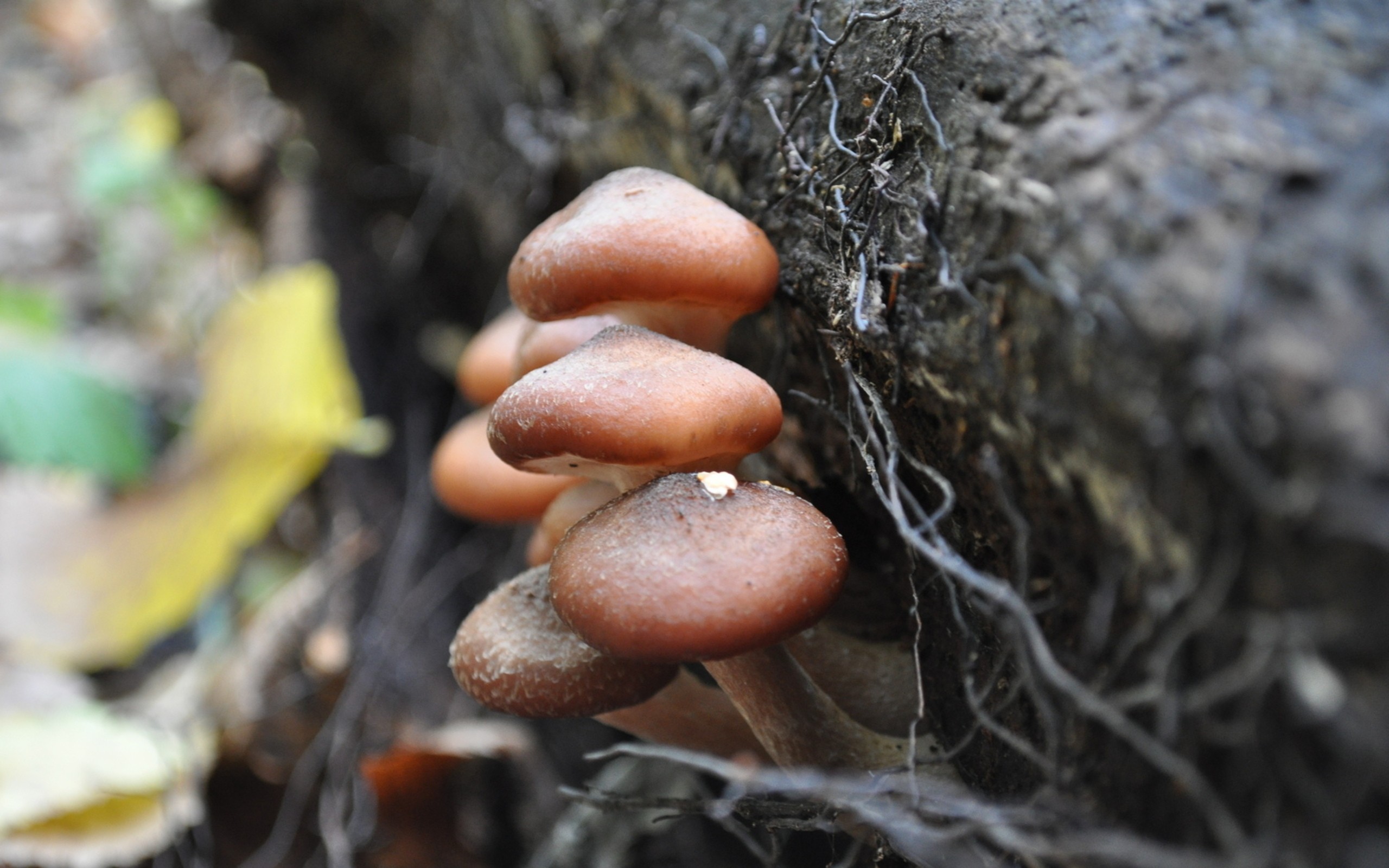
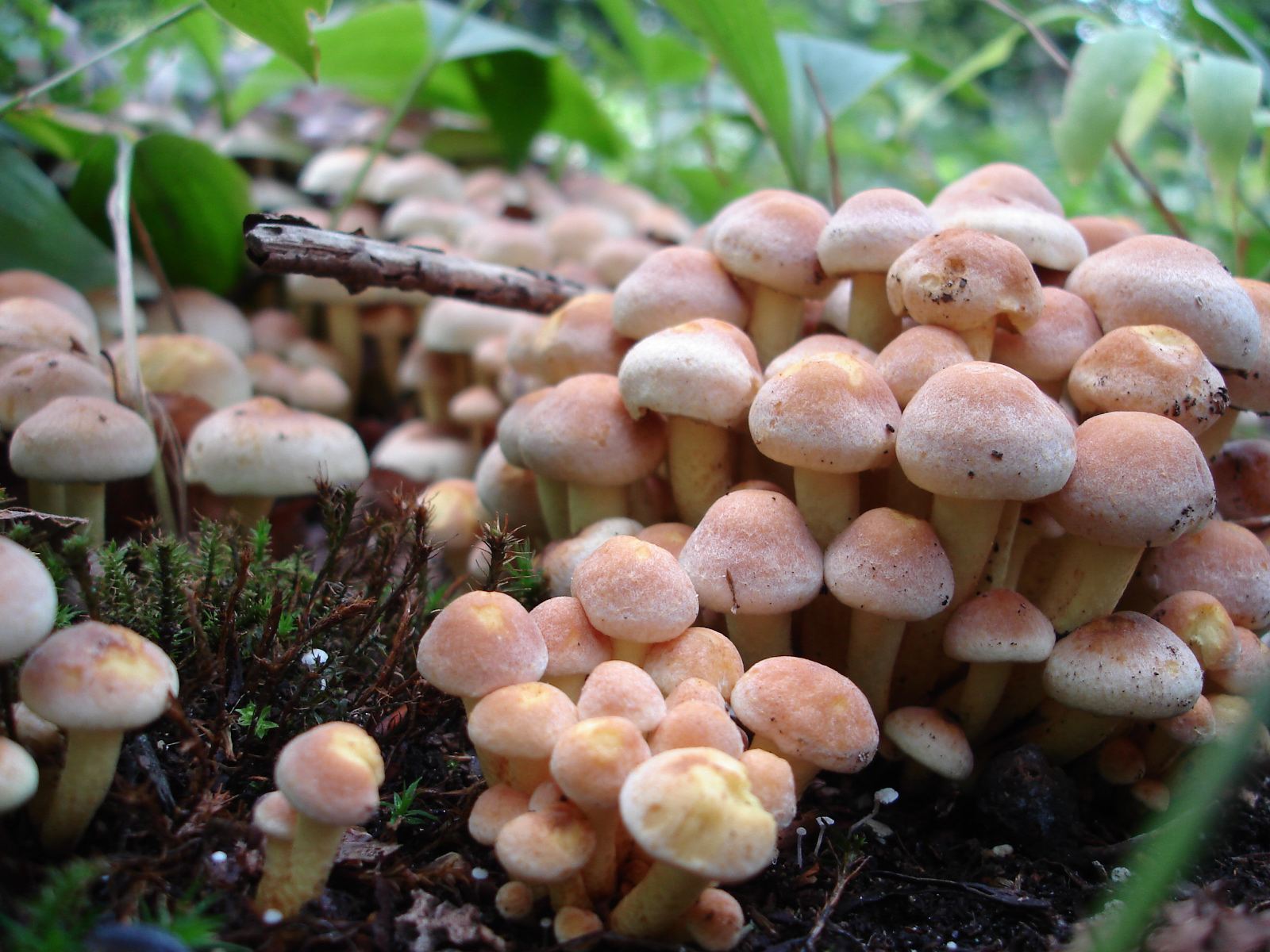
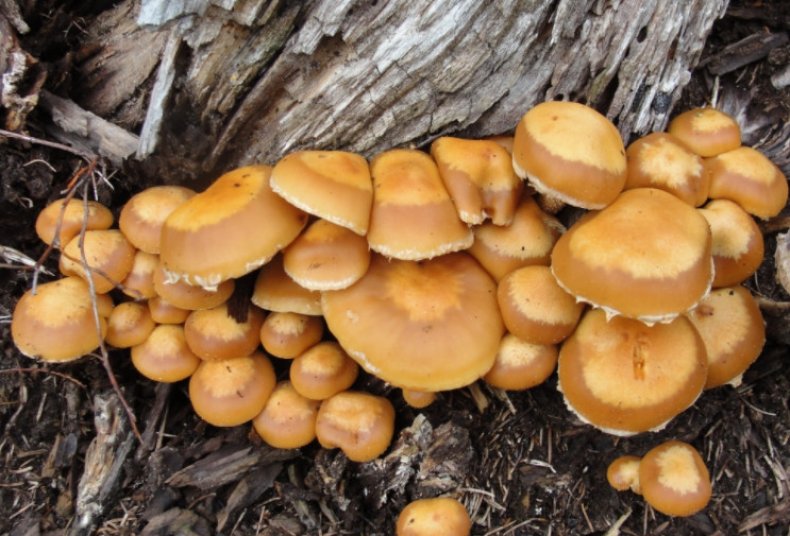
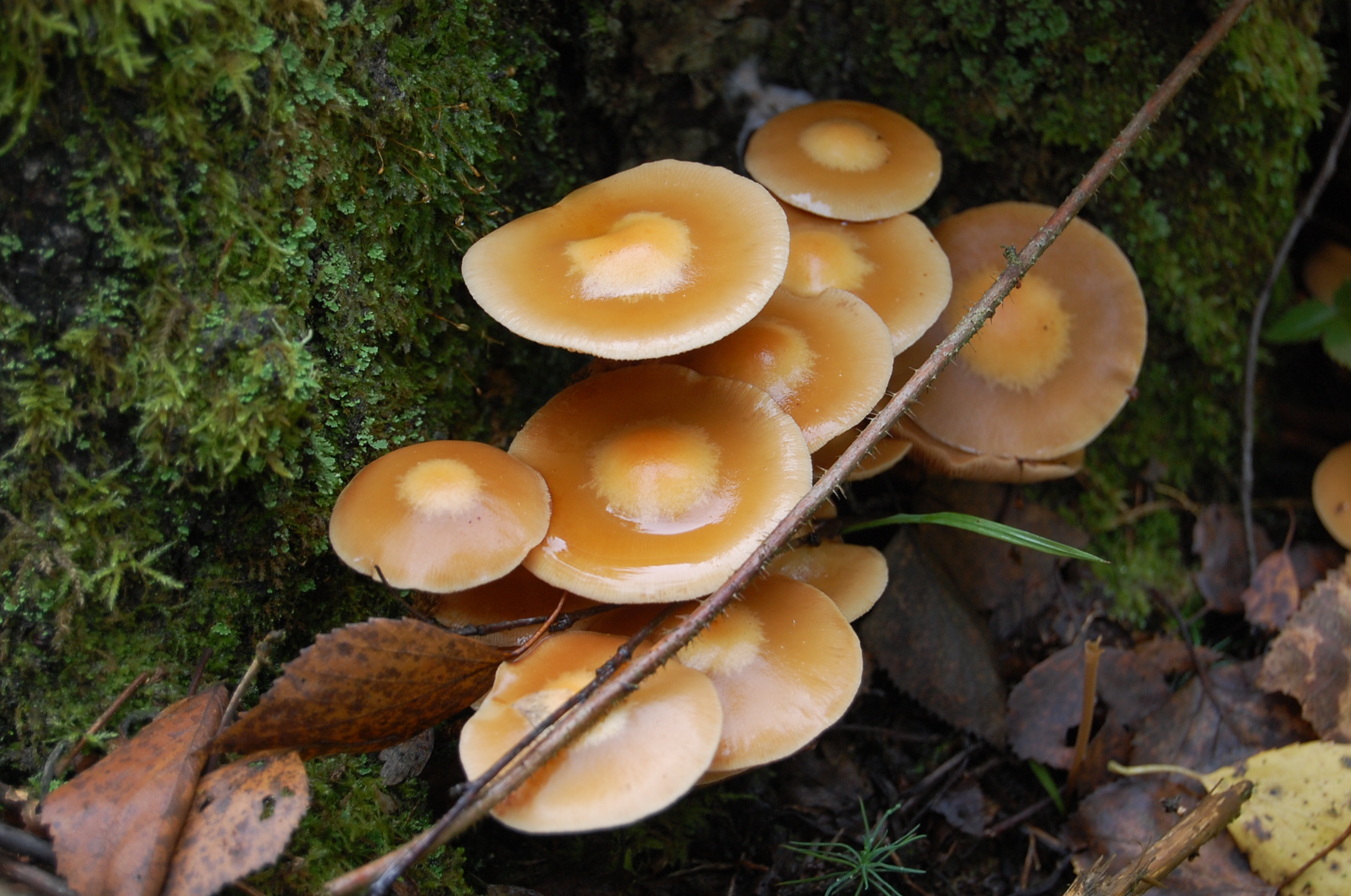
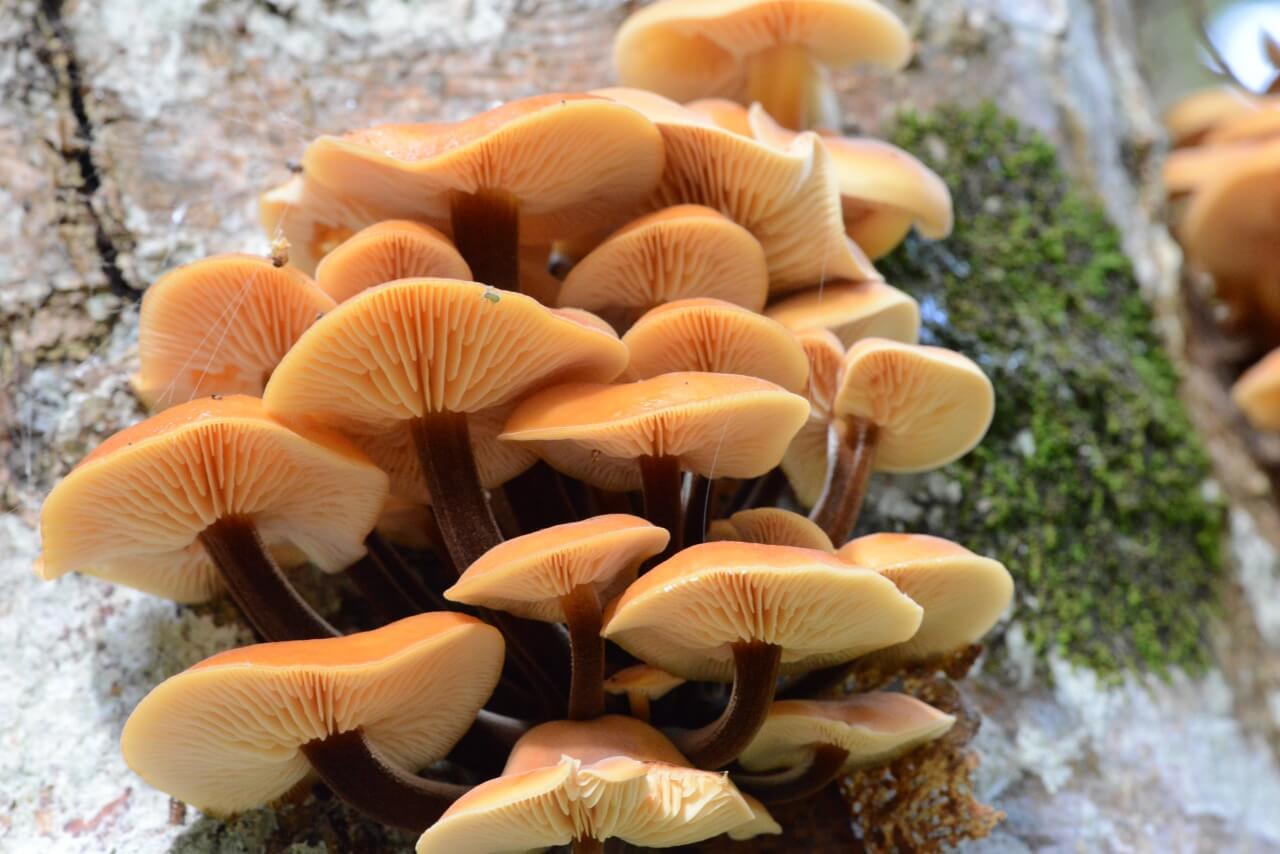
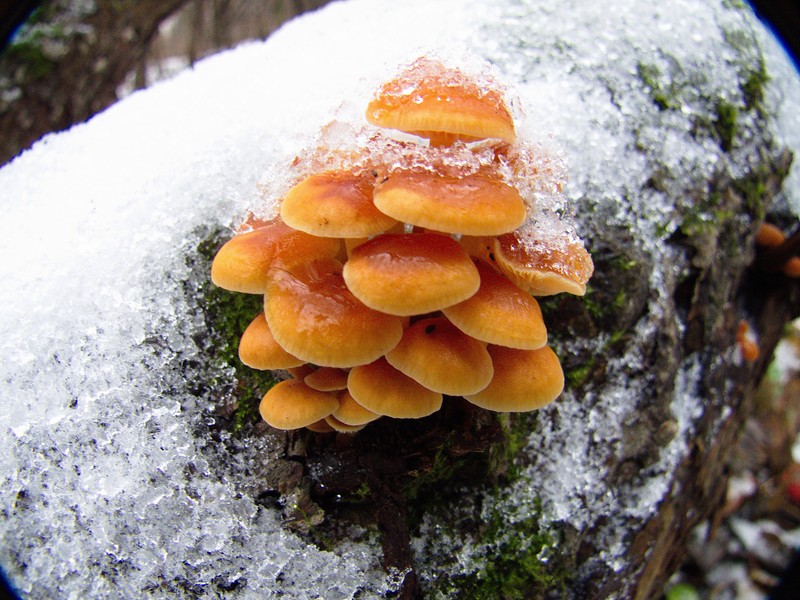



 Care and use of Kombucha at home (+22 photo)
Care and use of Kombucha at home (+22 photo) Edibility of the fungus of the motley umbrella and its description (+19 photo)
Edibility of the fungus of the motley umbrella and its description (+19 photo) Description of edible and inedible oils, their poisonous counterparts (+40 photos)
Description of edible and inedible oils, their poisonous counterparts (+40 photos) Useful properties of milk mushroom and its contraindications (+17 photos)
Useful properties of milk mushroom and its contraindications (+17 photos)
Irakli Meipariani
A couple of times I came across whole thickets of honey agarics of a bright yellow-orange color, similar to “sulfuric” but there was no green shade on the legs. Elastic, the smell of mushroom. Collected, when they then began to boil - I tried. The taste turned out to be sharply bitter, like a tablet of chloramphenicol. It’s completely safe mushrooms, since no one can eat them.